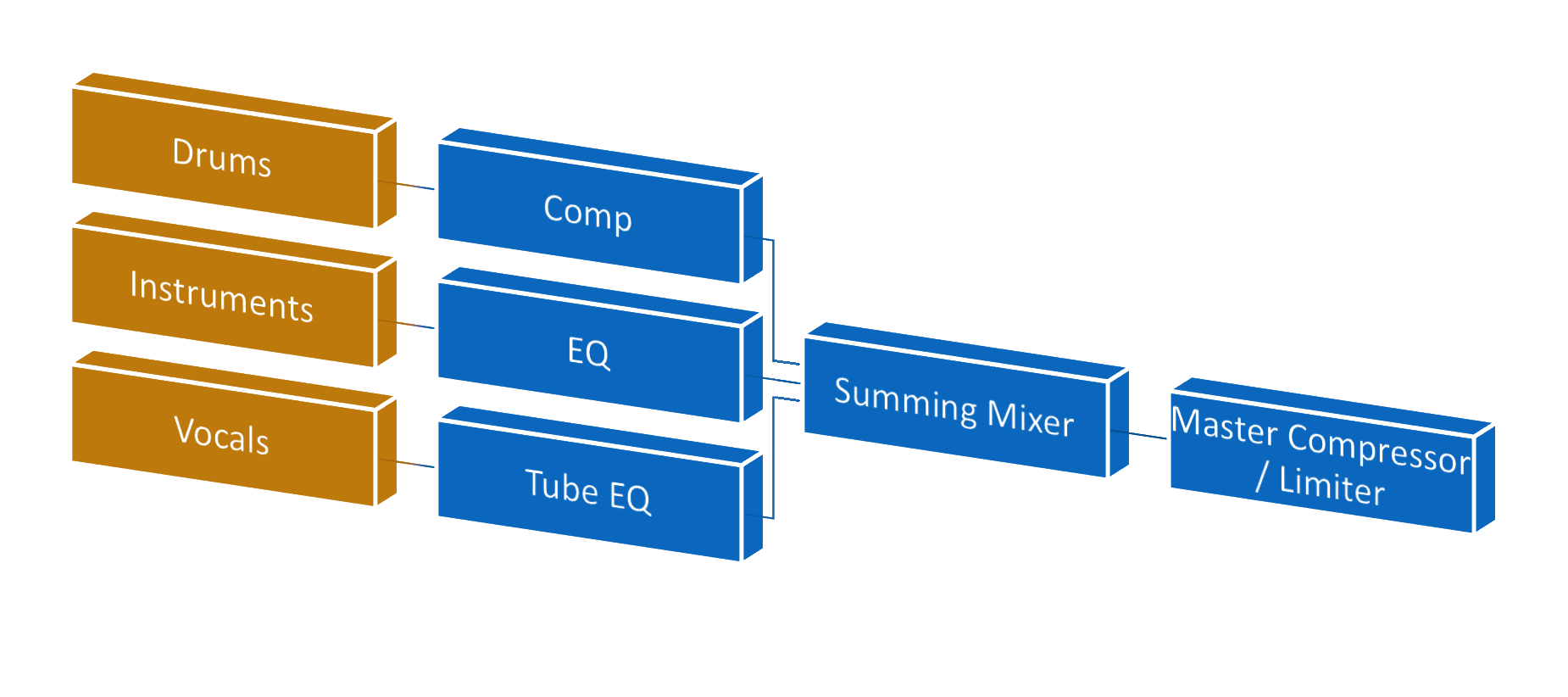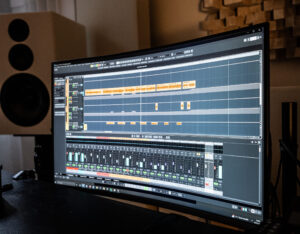The mysterious distinction between mixing and mastering – it has been an overcomplicated aspect of making music ever since mixing and mastering services hit the internet. Thousands of independent artist making use of mastering services first had to understand what it is that they’re paying for. What would be the best way to make use of two different perspectives on the mix?
The industry-way of doing things is for one engineer to finish the mix, and for another one to fine tune the overall frequency balance and make the mix loud. In reality the self-producing artist will find him or herself in a situation where the lines between mix and master are blurred. Regardless of whether you master your own songs or have them mastered, stem-mastering can help you with problems in your mix and further increase the potential for overall improvement from mastering. Stem mastering means, that the mastering engineer will receive a number of sub-groups – so called “stems” – instead of a single stereo-mixdown. That means the mastering engineer will have more possibilities in altering the sound and balance of the mix according to his wishes. It is the best way to make more intense use of mastering-hardware specifically where the mix needs it and integrate analog summing into the process as well.
How to pick the right stems for you song
It doesn’t make a lot of sense chosing stems based on percieved problems in the mix. Any imbalance should be dealt with in the mix and not postponed to mastering. If you are unhappy with your mix you should go back and fix the problems before you proceed to mastering, or take a look at our mixing packages if you need help. If you are happy with your mix however, think about what elements go together and what elements need seperation. The benefit in stem mastering for one lies in the possibility to apply hardware effects only to certain elements in the song, and in the utilisation of analog summing, which can deliver a thicker, more unified sound. If you feel comfortable with your mix, in generel there is no real need for stem-mastering, most engineers would agree. If you are feeling adventurous however, here is an example of how a stem-mastering chain could look like:

What’s Analog Summing?
Using our vintage summing mixer built by ATD-Audio, we will blend your stems together in a completely analog environment. That usually leads to a thicker and more glued sounding master, whereas summing in the DAW will sound cleaner and more precise. It also allows for slight adjustments to the levels, while already hearing what the final master will sound like. The difference from purely using different methods of summing can be described as subtle and even subjective at times. However, it gives flexibility during the mastering process, which can in some cases lead to a better result.
Bottom Line
Stem mastering as a tool that gives more flexibility to the mastering engineer. Keep in mind however, that you should not look at stem mastering because you are unhappy with your mix. Look at it as a possibility to make slight improvements and introduce a different flavor into your sound by utilizing a more analog signalpath throughout.
If you want to hear the benefits of professional mastering for yourself, go to our mastering page and send us your track today!


